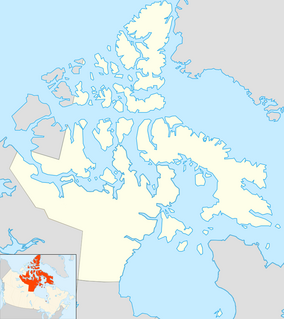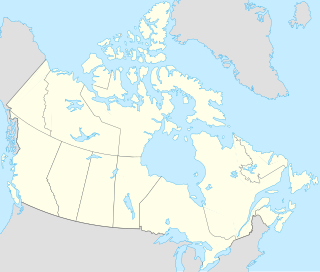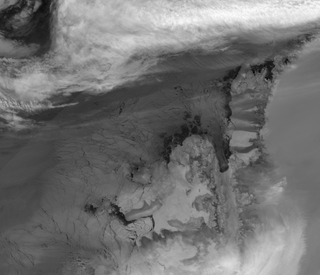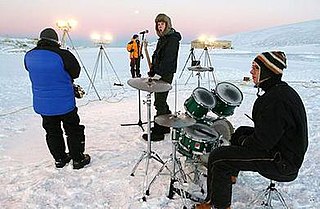
Yakoruda Glacier is a glacier on the west slopes of Dryanovo Heights, Greenwich Island in the South Shetland Islands, Antarctica situated west of Teteven Glacier and northwest of Murgash Glacier. It extends 3.5 km in north-south direction and 2.5 km in east-west direction, is bounded by Greaves Peak, Hrabar Nunatak and Crutch Peak to the north, Lloyd Hill to the east and Kerseblept Nunatak to the south, and drains westwards into Berende Cove, McFarlane Strait.

Snow Hill Island is an almost completely snowcapped island, 33 km (21 mi) long and 12 km (7.5 mi) wide, lying off the east coast of the Antarctic Peninsula. It is separated from James Ross Island to the north-east by Admiralty Sound and from Seymour Island to the north by Picnic Passage. It is one of several islands around the peninsula known as Graham Land, which is closer to South America than any other part of the Antarctic continent.
The Seal Nunataks are a group of 16 islands called nunataks emerging from the Larsen Ice Shelf east of Graham Land, Antarctic Peninsula. The Seal Nunataks have been described as separate volcanic vents of ages ranging from Miocene to Pleistocene. There are unconfirmed reports of Holocene volcanic activity.

Aitkenhead Glacier is a 10-mile (16 km) long glacier flowing east-southeast from the Detroit Plateau, Graham Land, into Prince Gustav Channel. It was mapped from surveys by the Falkland Islands Dependencies Survey (FIDS) (1960–61), and named by the United Kingdom Antarctic Place-Names Committee for Neil Aitkenhead, a FIDS geologist at Hope Bay (1959–60).

Iglunga Island is an uninhabited island in the Qikiqtaaluk Region of Nunavut, Canada. It is located in Baffin Island's Cumberland Sound, between Kangilo Fiord and Kangerk Fiord. Anarnittuq Island, Clear Passage Island, Imigen Island, Ivisa Island, the Kekertelung Islands, Nunatak Island, and Saunik Island are in the vicinity.

Clear Passage Island is an uninhabited island in the Qikiqtaaluk Region of Nunavut, Canada. It lies in Kangilo Fiord, the southern of Baffin Island's Cumberland Sound's two ends. The False Passage Peninsula lies northwest of the island. Anarnittuq Island, Iglunga Island, and Nunatak Island are in the vicinity.
Wandel Land is a 15.7 km (52,000 ft) nunatak in the Qaasuitsup municipality in northwestern Greenland. It is one of several nunataks in the Melville Bay region of Greenland, where the Greenland ice sheet drains into the bay alongside its entire length apart from an occasional nunatak.
Nunatarsuaq is a nunatak in the Qaasuitsup municipality in northwestern Greenland.
Nunatakassak is a nunatak in the Qaasuitsup municipality in northwestern Greenland. It is one of several nunataks in the Melville Bay region of Greenland, where the Greenland ice sheet drains into the bay alongside its entire length apart from an occasional nunatak.
Nunatarsuaq is a nunatak in the Qaasuitsup municipality in northwestern Greenland.
Bon Docteur Nunatak, also known as Good Doctor Nunatak, is a small coastal nunatak, 28 metres (92 ft) high, standing at the west side of the Astrolabe Glacier Tongue, 400 m (1,300 ft) south of Rostand Island in the Geologie Archipelago of Antarctica. It was photographed from the air by U.S. Navy Operation Highjump, 1946–47, charted by the French Antarctic Expedition, 1952–53, and named for Dr Jean Cendron, the "good doctor", medical officer and biologist with the French Antarctic Expedition, 1951–52.
Mount Monique is a mountain, about 600 m high, with a prominent rocky north face and ice-covered south slopes, at the western end of the Marion Nunataks on the north coast of Charcot Island in the east Bellinghausen Sea of Antarctica.
Hengist Nunatak is an isolated flat-topped nunatak, more than 610 metres (2,000 ft) in height, which rises above Roberts Ice Piedmont 10 nautical miles (19 km) north of Mount Calais lying in the northeastern extremity of Alexander Island, Antarctica. It was first photographed from the air in 1936 by the British Graham Land Expedition under John Rymill, and was surveyed from the ground in 1948 by the Falkland Islands Dependencies Survey. The names for this feature and for the Horsa Nunataks to the north are for the brother chieftains, Hengist and Horsa, who were believed to have led the first Saxon bands which settled England in the fifth century.

The Marion Nunataks are a small group of nunataks rising to about 600 m (2,000 ft) on Charcot Island, in the eastern Bellinghausen Sea of Antarctica. They form a 12 km chain of rocky outcrops on the mid-north coast of the island, stretching from Mount Monique at the western end to Mount Martine in the east.
The Horsa Nunataks are an isolated group of about five partly snow-covered nunataks, more than 610 metres (2,000 ft) high, which rise above Roberts Ice Piedmont, 14 nautical miles (26 km) north of Mount Calais, in the northeastern part of Alexander Island, Antarctica. They were first photographed from the air in 1936 by the British Graham Land Expedition under John Rymill, and were surveyed from the ground in 1948 by the Falkland Islands Dependencies Survey. The names for these nunataks and for the isolated Hengist Nunatak to the south are for the brother chieftains, Hengist and Horsa, who were believed to have led the first Saxon bands which settled England in the fifth century.







